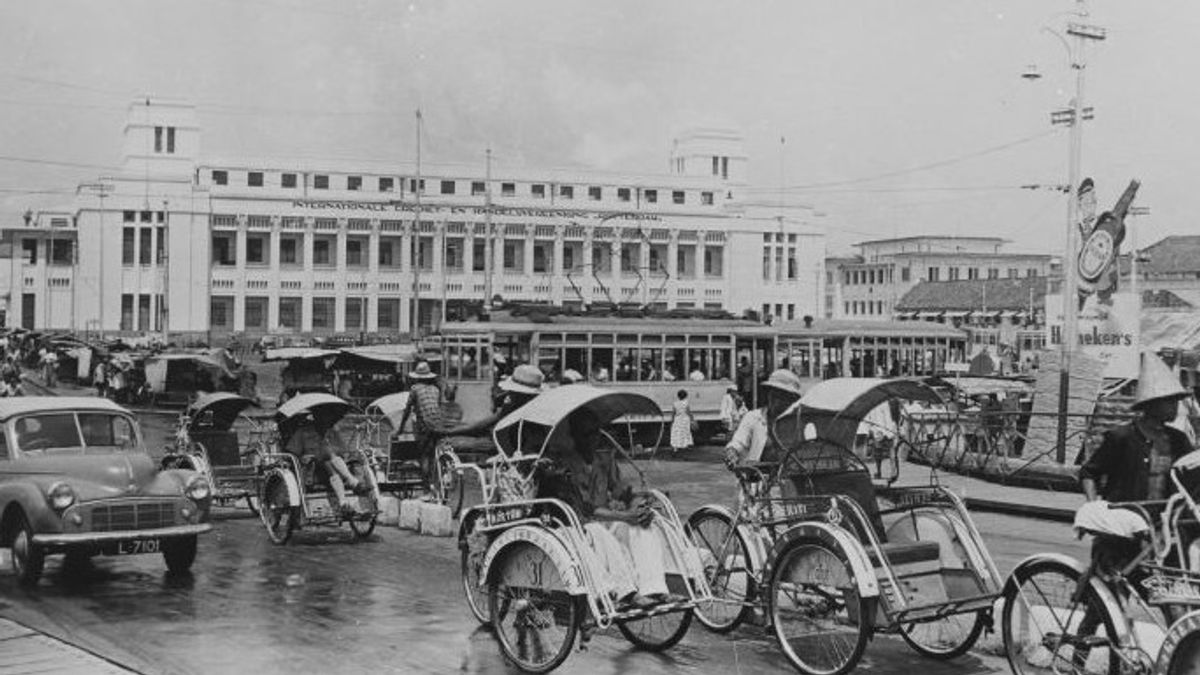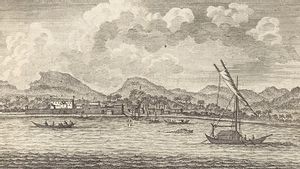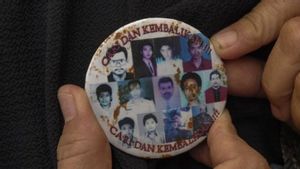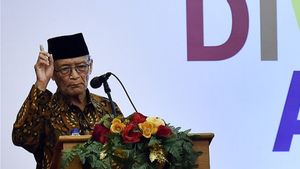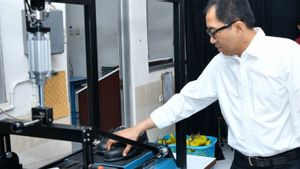JAKARTA - A group of pedicab drivers was once an important part of the growth and development of the city of Jakarta. They incarnated like saviors of limited transportation in the 1950-1960s era. In fact, pedicabs are the favorite vehicle of residents and traveling tourists.
Everything changed when Jakarta started to get crowded. There are also more pedicab drivers. This condition makes it difficult to discipline pedicab drivers. They often violate traffic rules. Moving in the opposite direction, let alone. The DKI Jakarta government then saw them as sworn enemies.
Once upon a time, when Jakarta was not yet crowded, pedicabs were once the prima donna. Transportation that relied on physical strength was widely used by Jakarta residents in the 1950s. Jakarta residents don't need to spend more to ride a pedicab.
The cost of a pedicab ride is relatively cheap. Even though it will be expensive if the distance traveled is far and it is raining. Still, the narrative does not make the customer less. The need for pedicab transportation continues to increase. Because there is no more reliable transportation.
Pedicab shrewd in out of the village quickly. Pedicabs are also able to pick up and drop off passengers at will. That advantage can only be rivaled by bicycles. Moreover, pedicabs are also favored by tourists as the favorite vehicle for traveling around Jakarta.

Another advantage of the pedicab is that it can be relied on for every celebration. Primarily, pedicabs are regulars in the Betawi people's rites of life. People flock to rent pedicabs for all kinds of celebration needs such as accompanying the bride to circumcision.
Many state officials in the 1960s also used pedicabs. Wardiman Djojonegoro, one of them. He often used a pedicab in his daily activities when he was still an official at the Indonesian Development Bank (Bapindo: one of the former BUMNs).
The figure who later became known as the Minister of Education and Culture in the 1993-1998 era liked to use tricycles. He called the pedicab a fast and reliable transportation.
“In the 1960s, Jakarta was still quiet, traffic was still quiet, and transportation was still minimal. From Bapindo to the Ministry of Sea Transportation, it is about 2 kilometers, I usually take a pedicab. Maybe seeing me coming to the Department of Sea Transportation on a pedicab every day, I didn't expect it at all, said Mr. Tobing with his distinctive Batak accent.
"It's hard too, it seems you always come here using a pedicab. Even though I feel there is no problem to come by pedicab. So it's faster sir, besides not far," explained Wardiman Djodjonegoro in the book Sepanjang Jalan Kenangan (2016).
Sworn Enemy
The development of the city of Jakarta is relatively fast. The traffic, which was quiet at first, started to get busier and busier entering the 1970s. The busy traffic is also marked by the increasing number of pedicab drivers earning a living in Jakarta.
They consider Jakarta a dreamland to work. In fact, the large number of pedicab drivers started to present various problems. The governor of DKI Jakarta in the 1966-1977 era, Ali Sadikin, felt that the pedicab drivers had begun to disrupt Jakarta's traffic.
Even Ali Sadikin said that the presence of pedicabs created 1,001 problems in Jakarta. Instead of just causing traffic jams, pedicab drivers are considered arrogant on the streets. The pedicab drivers act as they please. Mainly, business against direction. Even though this action can be detrimental to both parties, up to the loss of life.
Since then the DKI Jakarta government and pedicab drivers have been sworn enemies. The owner of the power begins to control the pedicab drivers. Ali also chose the option of slowly getting rid of the pedicab drivers. A pedicab free zone was also established. This is because Jakarta does not want to be as chaotic as the city in India, Kolkata.

The problem has not been resolved even though Ali Sadikin has stepped down from his position. His successor, Tjokropranolo, who served from 1977-1982, was different from Ali. Tjokropranolo instead was being 'nice' by giving the rickshaw pullers space. Even so, the government was continued by the Governor of DKI Jakarta, Raden Soeprapto who served from 1982-1987.
New changes emerged when Wiyogo Atmodarminto took over the leadership. The Governor of DKI Jakarta in the 1987-1992 era made pedicabs a mortal enemy again. He wants Jakarta to be free of tricycles. His policies reduced the existence of this transportation a lot and slowly began to fade in the following years.
"I announced that it is no longer justified to build new pedicabs. I forbid. At that time, the DKI Jakarta government was intensifying the control of public transportation in the capital city, including the operation of pedicabs, oplet, and bemo. There are still many pedicab drivers who violate traffic rules. Until I was forced to say: just take action against the pedicab drivers who break it. And don't let pedicab brothers act as they please. They were just a little nudged and already attacked and ganged up. But on the other hand, if he crashes, gosh they want to win.”
"If I don't act to teach them good manners, I'm the one who is wrong. It's like if I let my child do something wrong, I'm the one who's wrong. I feel we are a big family. Do we let things go wrong or try to fix things? I firmly chose the second one," said Ali Sadikin, as written by Ramadhan K.H. in the book Bang Ali: Demi Jakarta 1966-1977 (1992).
اقرأ أيضا:
The English, Chinese, Japanese, Arabic, and French versions are automatically generated by the AI. So there may still be inaccuracies in translating, please always see Indonesian as our main language. (system supported by DigitalSiber.id)
